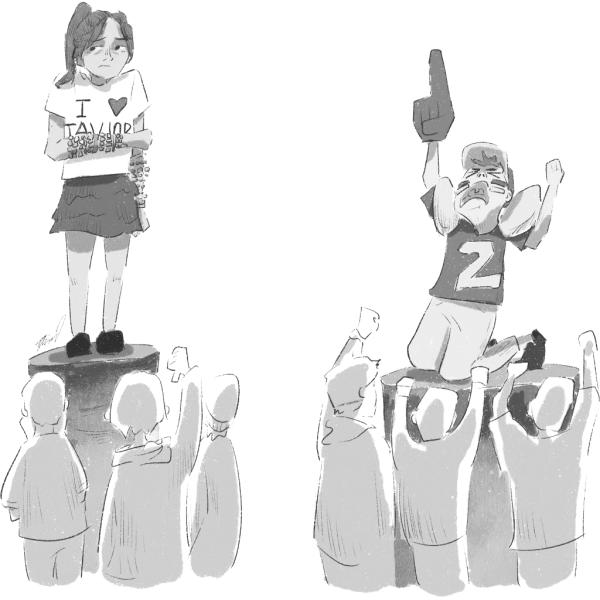Upsets in women’s basketball are hopeful signs for female athletics
April 7, 2023
In the basketball world right now, it’s a tough time to be a UCONN Huskies fan. It’s a downright awful time to be a Stanford Cardinal fan. It is, though, a great time to be a woman.
This March Madness, the women’s brackets have been riddled with upsets. Eleven seeds knocking out 5s, two top seeds barred from the Sweet 16 for the first time in a century, and long-standing powerhouses losing their luster. While some of us, like me, may be ripping our hair out over the domino effect of these “Cinderella stories” on our bracket predictions, it’s actually a positive sign; they’re proof of a burgeoning, flourishing world of female athleticism.
The positive correlation between upsets and the success of collegiate women’s basketball is the interest in the sport as a whole. Think of the March Madness tournament, and women’s basketball as a whole, as a product. This same product is sold by lots of brands (colleges). The larger the demand for this product, the more competition there will be amongst these brands to produce the best version of that product—the version the most customers will buy. The brands will invest more time, effort, and money into crafting a good product (running the team), invest more into sourcing good material (recruiting high caliber players), and showing to the world how their product is the best (publicity).
What results is a multitude of well-crafted products: adept and developed teams. They’re all different in their own ways, but of much higher quality, and with a wider customer base, than one unopposed product.
Evidence of this is only a few dribbles or a traveling violation away. Men’s basketball in the NCAA Tournament has always seen considerably more upsets than women’s basketball. Unlike in men’s basketball, women’s basketball sees untouchable teams like the UCONN Huskies win 145 games in a row. Men’s basketball is also the first thing, nearly the only thing, that a Google Search will yield for “March Madness.” Men’s basketball has loads of comparably skilled teams, and ambitious programs at dozens of schools across the nation.
The wildly high and universal demand for men’s basketball incentivizes all colleges to put their best teams forward, teams capable and enabled by supportive bases. Consequently, regardless of their ranked seeds, mens teams remain highly competitive all throughout their brackets. That energy has been nowhere for women’s basketball for years.
Historically, a few select colleges made women’s basketball a selling point. If a woman had serious intentions to play basketball, she couldn’t apply to any college and be able to join a competent team. Barely any people watched women play basketball. Naturally, colleges weren’t rushing to rake in profits nor prestige with a successful team, because neither existed. The few programs that cared much, such as Stanford, UCONN, and Tennessee stockpiled the skill, and running with significantly lesser competition, won easily. Any team capable of beating them wouldn’t have been an upset, because they would’ve had to be one of a sparse group of colleges furthering their women’s basketball, and thus, a fairly high seed themselves.
The momentum could not be more different today. Today, hundreds of thousands of people tune in with genuine interest in women’s games. Girls in elementary school to women preparing to enter college have aspirations of basketball stardom. Women’s basketball is an in-demand product, and brands have finally realized it’s a product they ought to sell. Companies want to advertise and associate with women’s college basketball, and colleges new to seriously competitive play are strengthening their teams across the board.
Each unexpected underdog triumph is the rise of another college choosing to recognize the power and value in women’s sports, choosing to invest and support them, and making enough progress to dethrone courtside queens. Upsets are, well, upsetting, for those on bandwagons inexperienced with loss, but each loss is further proof that women have what it takes to win.






